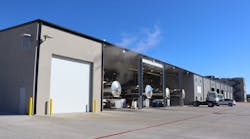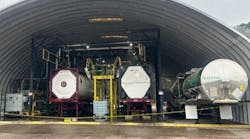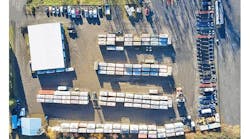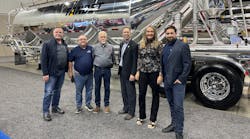JUST a few days from now (April 4 and 5 to be exact) the 2011 National Tank Truck Carriers (NTTC) Tank Cleaning & Environmental Council annual conference will convene in Austin, Texas. The conference program was still being developed at press time, but association staffers said driver sustainability would be one of the topics on the agenda.
Driver sustainability needs to be on the Tank Cleaning Conference agenda, and it should be part of the informal discussions that take place during breaks, meals, and receptions. It is a critical issue, and wash racks absolutely play a role in promoting driver sustainability.
Terry O'Brien, president of QualaWash Holdings LLC, addressed driver sustainability from the wash rack perspective in a QualaWash profile published in this month's issue of Bulk Transporter. “We know it is critical in today's operating environment to do everything we can to take care of our customers' drivers,” he said. “We know that we play a role in helping to ensure driver sustainability. We understand that driver sustainability must be as important to the cleaning facility as it is to the fleet. We are an extension of our customers. If they succeed, we succeed.”
QualaWash has been working hard to enhance driver amenities at its locations. This includes providing updated driver lounges, making available a range of refreshments, and providing assistance with hotel and motel reservations as needed. QualaWash facilities hold quarterly and monthly driver days with barbeques and other special activities.
The QualaWash operation is by no means alone in its driver focus. Other commercial Tank cleaning providers also have been proactive in providing enhanced driver amenities and services. It is a win/win/win for the wash racks, drivers, and tank truck carriers. Happy drivers bring more business to a wash rack and continue to view the tank truck industry as the preferred sector for employment.
While this may sound simplistic, it is reality. It is vital that truck drivers view the tank truck sector as a preferred place to work. Every sector of this industry must play a role in helping tank truck carriers attract and keep the best drivers.
To that end, NTTC proclaimed 2011 The Year of Tank Truck Driver Sustainability. NTTC's leadership has pledged to work with carriers, shippers, and regulators to make the tank truck sector the industry of choice for elite truck drivers. That message will be reinforced throughout the year at NTTC meetings.
In a recent Bulk Transporter editorial, NTTC President John Conley wrote that “sustainability is to the bulk truck distribution industry [today] like ‘quality’ was in 1990. It should not be viewed as just another buzz word, though.
In today's operating environment, the tank truck industry faces its greatest-ever resource challenge — attracting and retaining qualified tank truck drivers. A wide range of factors contribute to a growing truck driver shortage.
Part, but certainly not all, of the cause stems from the avalanche of trucking regulations that has spewed out of the federal agencies in Washington. The biggest impact in recent months may have come from the Compliance, Safety, Accountability (CSA) program that the Federal Motor Carrier Safety Administration began enforcing in December 2010.
CSA is a good concept with objectives that include minimizing crashes and creating a safer driving environment. Part of the effort to achieve those objectives includes eliminating bad truck drivers from the industry.
By some accounts, CSA's pre-employment screening requirement will reduce the total truck driver force by at least 9%. That will be felt industrywide and in a big way, because it means the loss of 300,000 to 500,000 drivers by some estimates.
The hours-of-service revisions being pushed by the federal government could chase more truck drivers from the industry. The revisions would cut the number of daily driving hours and would lengthen the mandatory reset break. If these revisions are adopted, driver pay could effectively be cut.
These and other regulatory factors come on top of the recent recession, during which some drivers lost their jobs and others (particularly owner-operators) chose to leave because they weren't making enough revenue. Many of the truck drivers who left during the recession have not returned.
In short, the driver shortage has come back big time for the trucking industry. Drivers must be viewed as a natural resource that has to be protected and nurtured.
The futures of the tank truck industry and the customers it serves depend on the ability of the industry to conserve and sustain the elite drivers that are critical for success. “We must educate our shipper customers to include the tank truck driver as an essential resource as they develop their own sustainability strategies,” Conley said. “The human footprint must be as important to them as their environmental footprint.”
It is critical for the tank truck industry as a whole to be proactive and take the lead on this issue. We look forward to the discussions on driver sustainability during the NTTC meetings in Austin, Texas.
Agree or disagree? Make your voice heard by visiting Bulk Transporter Interactive at bulktransporter.com and clicking on “Contact Us.”








